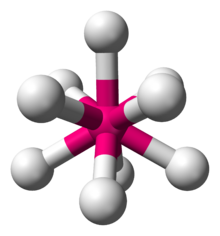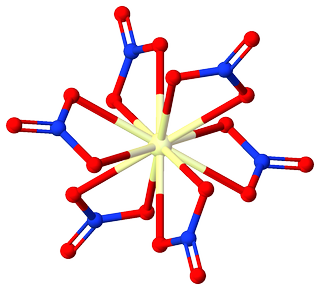14 coordination is claimed in $\ce{U(BH4)4}$ (ref_1, p. 268). The molecule exists as a polymer in the solid state. Six hydrogens from two of the $\ce{BH4}$ groups bond between the boron and uranium (a bridge bond). Two hydrogens from each of the two remaining $\ce{BH4}$ groups also bridge bond to uranium; the other two hydrogens bond to an adjacent uranium atom to build the polymer. So far this takes us to 10 hydrogens (6+4) bonding to the central uranium. Two more hydrogens in two $\ce{BH4}$ groups in two adjacent uraniums also bond to the initial uranium, just as described above, as part of the polymer extension. These 4 additional bonds to hydrogen take the coordination number to 14.
Coordination number 15 has been found in $\ce{Th(H3BNMe2BH3)4}$, and it is suggested that the molecule would have a coordination number of 16 in the gas phase (ref_2)

(image source: see ref_2 above)
There are 7 short $\ce{B-Th}$ contacts and one long $\ce{B-Th}$ contact. Each short contact provides 2 hydrogens that bond to thorium, while the long contact provides 1 hydrogen for bonding to thorium, making for a total of 15 $\ce{Th-H}$ bonds.





